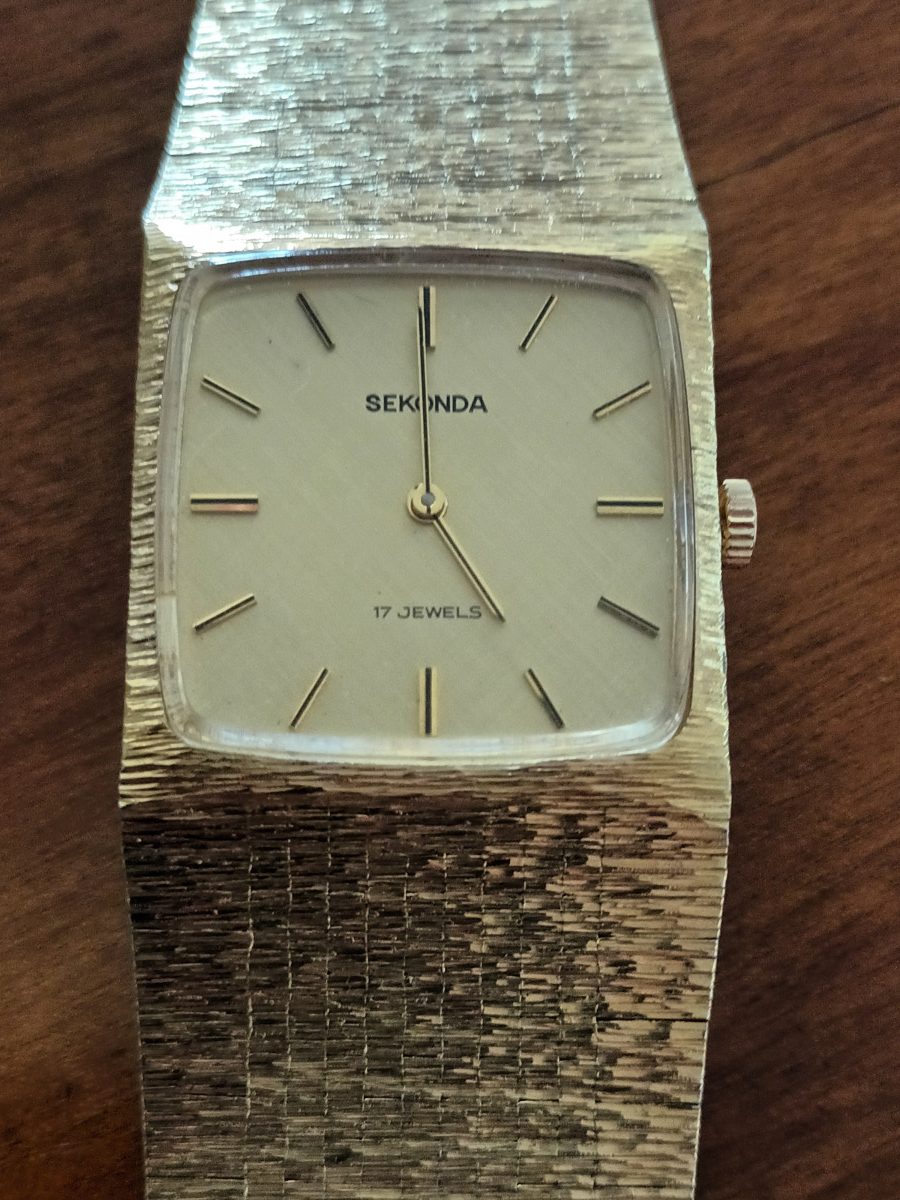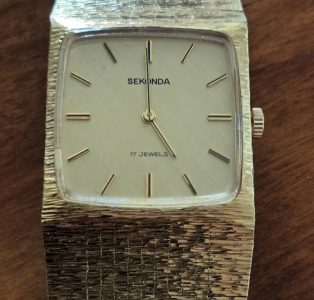Whilst recently peering inside cabinets in a jewellery/pawn shop at a coastal resort fairly near me, my eye was caught by a quite striking gold watch. Upon closer inspection I noticed it was a Sekonda, so, summarily dismissed it! A few months later I was in the shop again, and noticed that the watch was still there. This time I asked to have a closer look, and, was then pretty impressed – mainly with the integrated bracelet which had a lovely “bark” finish and moved sinuously. The piece had a square dial and was a manual wind. Overall, it appeared to be in pretty good condition. The watch happily fitted my wrist, and having also been assured that it worked fine, I did a deal on the price – from some £50 to £40. OK, there was no box or papers, but what can you do?
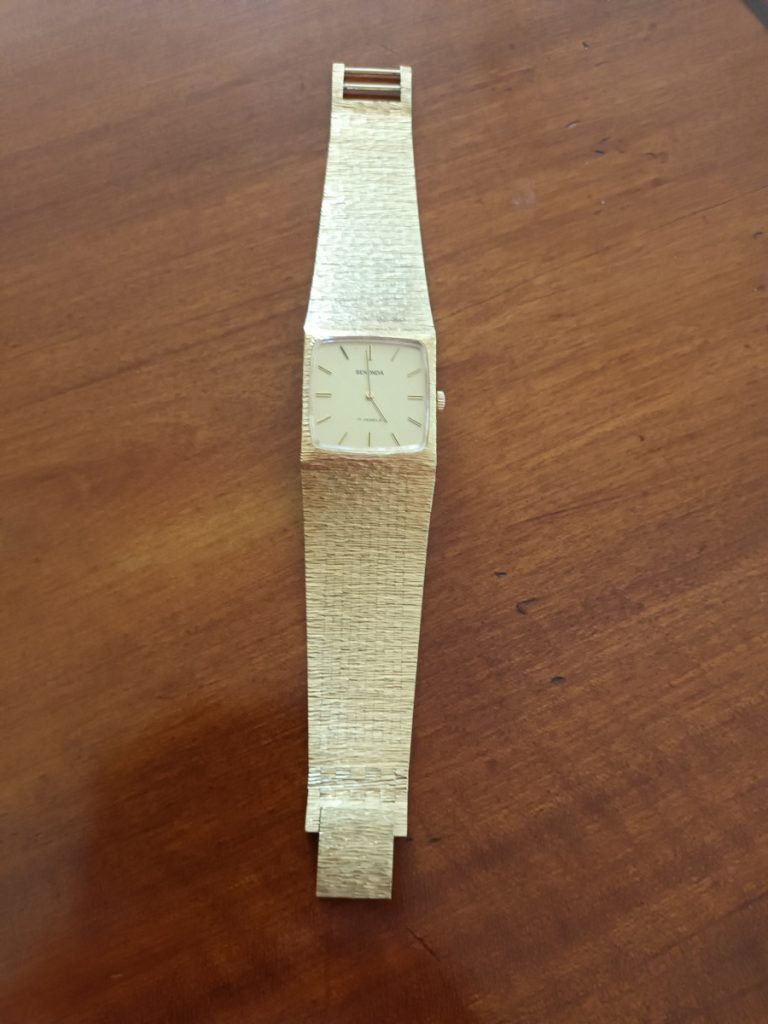
So, what have I bought? Well, clearly it is a dress-type model and from the look – and doing a little internet research, it probably dates from the mid-70s into the 80s. There is no name or reference numbers to be seen. It is possible that it is gold plated.
Before proceeding, it is worth just noting a little brand history. Back in 1931, one Alexander Margulies emigrated from Poland to the UK. In 1932 he set up a company called ELCO to import Swiss watches and clocks. By 1939 it was the largest distributor in the UK and was based in Hatton Garden. During the war, production switched to making aviation instruments. After the war, Russian watches were also imported. In the early 60’s, a new business, Time Products PLC, was created. After working in Swiss watch factories, Alexander’s son Marcus joins the firm. In 1966, the decision is taken to create their own brand, called Sekonda – Russian for Second. A variety of well-known Russian manufacturers were involved, such as; Poljot, Slava, Molnija, and Vostock to name but a few. Success ensued, as the watches were well designed, reliable, and affordable. When quartz watches became the new grail, production was started in Hong Kong. Again, these were very popular, and in fact Sekonda became one of the most well-known watch brands in the UK. Marcus became chairman in 1977. With the collapse of the Soviet Union in the early 90s, production ceased there and was moved entirely to Asia. It should be noted that running in parallel was the extremely successful distribution business – with the likes of Longines, Blancpain, Piaget, Breguet, AP, Hublot and Franck Muller. Alexander died in 1991 and Marcus, took over the business – taking it back into private ownership. Incidentally, Marcus also owns Accurist. Today, both companies still thrive, offering the same aspects that Alexander wanted all those years ago. The businesses have made Marcus is a multi-millionaire, and he also has an enviable watch collection.
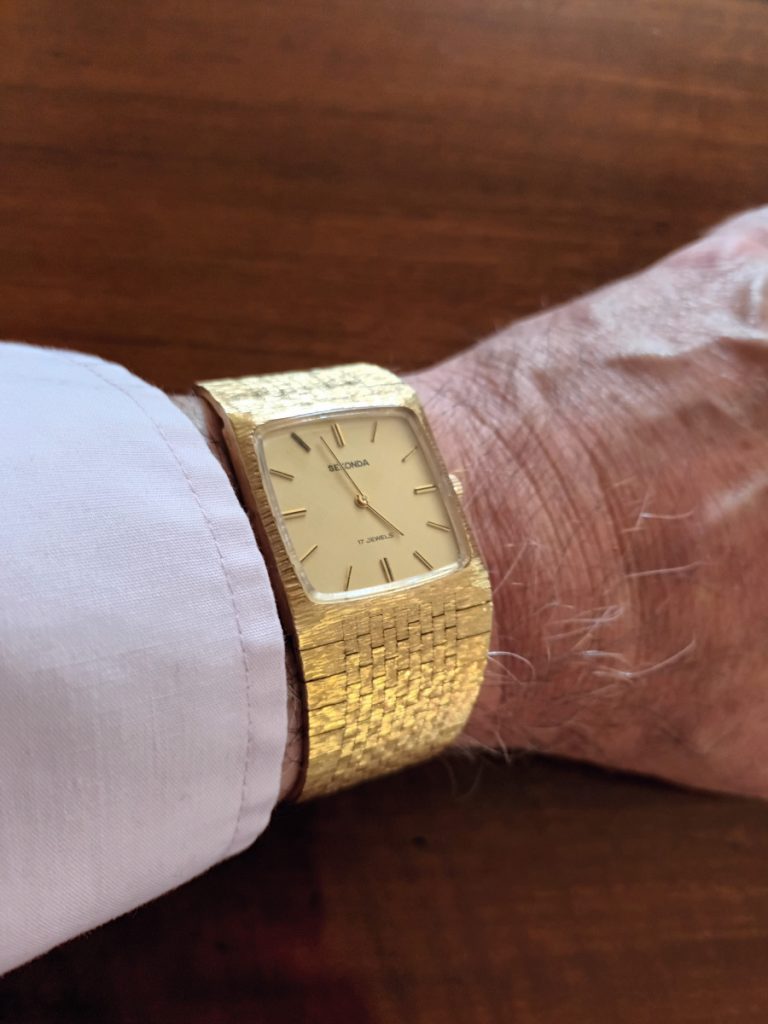
Turning back to my very modest purchase, I was relieved to discover that the watch did indeed work, and moreover very nicely thank you. I started to wear the piece, and it really does have an incredible wrist presence – mainly courtesy of the bracelet. I have looked closely at this and it really is an incredible piece of engineering really, with a slinky-type movement, along with the fantastic bark-like finish. It totally surrounds the dial and the case sides – which pan out at a width of 28mm. Even the small fold-over connecting tab has the same finish. Incidentally, there are are but two size settings available, so, very small wrists and large ones would probably lose out here as there is no altering the actual bracelet. Finally on the outside, is a modest crown with the letter S on the cap.
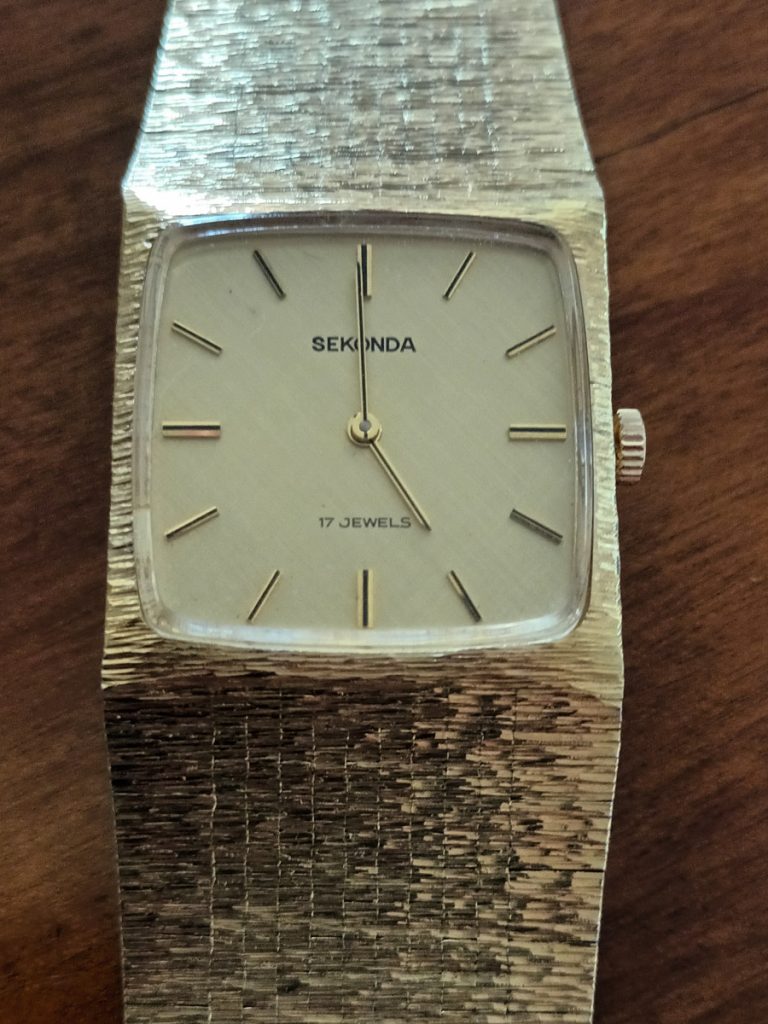
Unlike many watches I review, the dial is very much secondary here. It is a gold colour, with fine brushing of a linen-like texture. The hour batons are again a gold colour with fine black inserts. The golden hands are thin swords with a fine black inserts. As to script – just Sekonda under 12, and 17 Jewels above 6. There is no date, no second hand (or register) and no lume. So, the purity and simplicity of a dress watch.
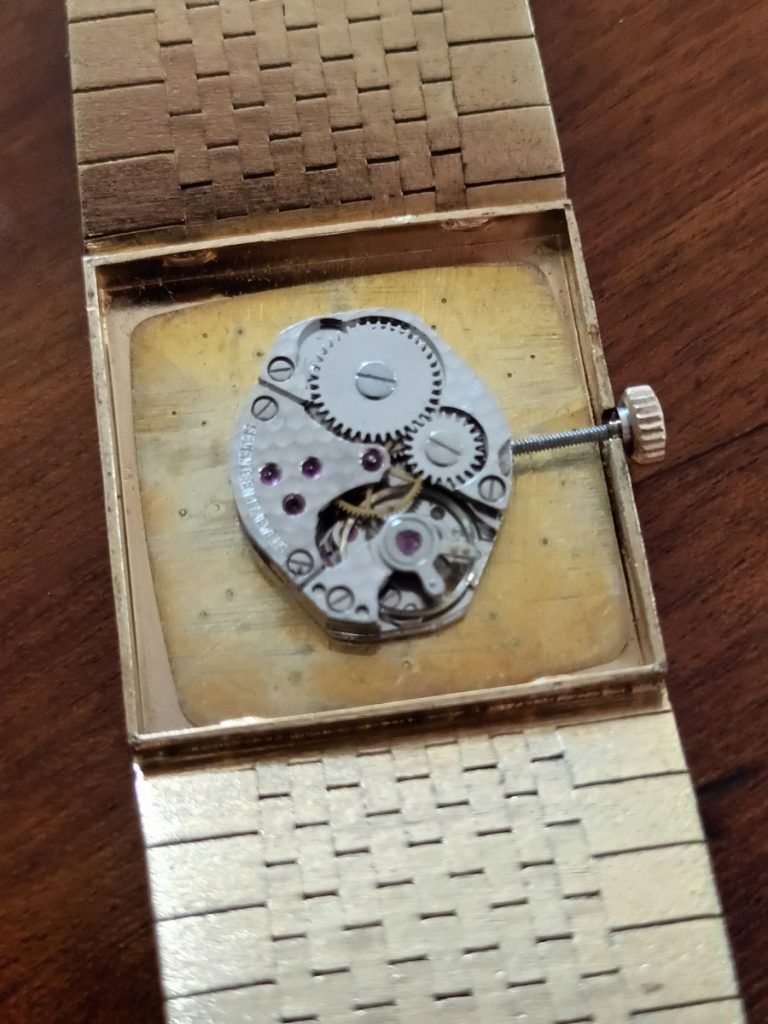
At the rear is a s/s pop-off back. I know it is s/s as it says so! Inside is a pretty miniscule movement. In fact, such is the size differential of this and the case, there is a recess on the inner case back that secures the movement in position. Usefully the whole thing just falls out so I was able to give the inner crystal a clean, plus deal with a smudge of dirt on the dial. Again, information is paltry, and I cannot discern and name or reference on the movement. Internet research has also yielded no information. All I know is that it is a manual wind (once per day really), and it has 17 jewels. I could of course contact Marcus – who I did meet briefly once at an event in London!
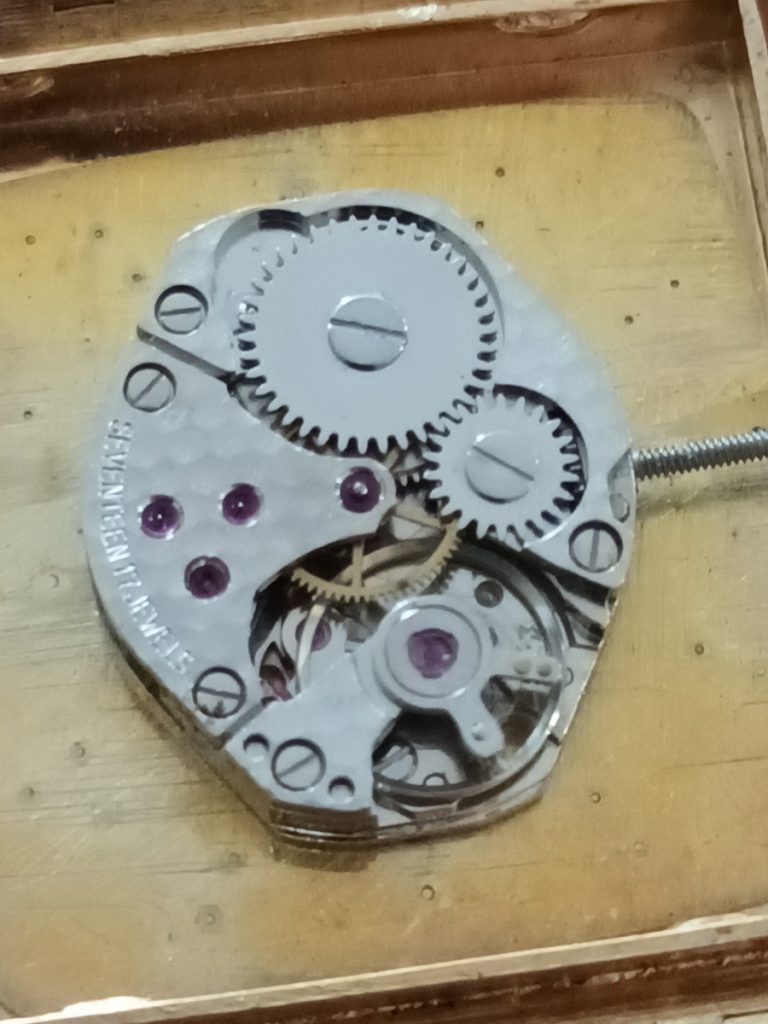
In conclusion, I can appreciate why Sekonda did (and do) so well – at least judging by this watch. If you were 70’s man and wanted a cheapish cool dress watch, that looked a million dollars (and not unlike, say, a Patek or VC at a glance), this one did the business! I am now that person and am quite content with my purchase, as I feel it is quite a bit of watch for the tiny outlay. Maybe I will now wear this out in the evening, rather than my real gold superstars!
Words & Images: The Writer

